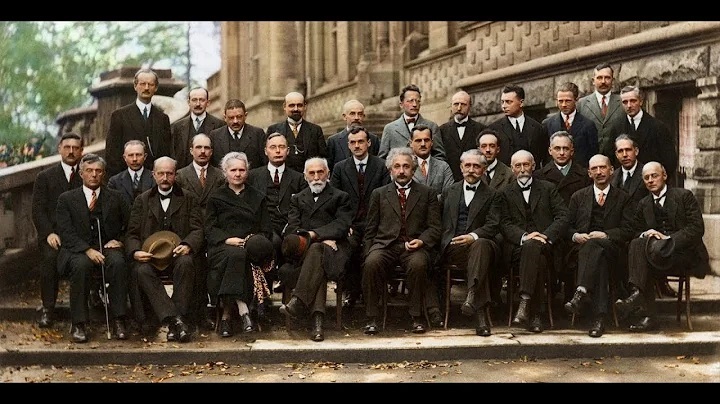|
home | what's new | other sites | contact | about |
||
|
Word Gems exploring self-realization, sacred personhood, and full humanity
Quantum Mechanics
return to "Quantum Mechanics" main-page
Called "the most intelligent picture ever taken": participants of the 5th Solvay Conference, 17 of the 29 attendees were or became Nobel Prize winners. Back: Auguste Piccard, Émile Henriot, Paul Ehrenfest, Édouard Herzen, Théophile de Donder, Erwin Schrödinger, JE Verschaffelt, Wolfgang Pauli, Werner Heisenberg, Ralph Fowler, Léon Brillouin. Middle: Peter Debye, Martin Knudsen, William Lawrence Bragg, Hendrik Anthony Kramers, Paul Dirac, Arthur Compton, Louis de Broglie, Max Born, Niels Bohr. Front: Irving Langmuir, Max Planck, Marie Curie, Hendrik Lorentz, Albert Einstein, Paul Langevin, Charles-Eugène Guye, CTR Wilson, Owen Richardson.
Henry Bolzon, Britannica: "Chaired by Dutch physicist Hendrik Lorentz and running from October 24 to 29, 1927, the fifth physics conference was devoted to “electrons and photons” but was dominated by disputes about the ideas behind quantum mechanics. "Beginning in 1925, Danish physicist Niels Bohr and German physicists Werner Heisenberg and Max Born, among others, had formed what came to be known as the “Copenhagen interpretation” of quantum mechanics, which postulated that the indeterminacy in the theory (i.e., that only the probability of a result could be predicted) was fundamental and should be accepted by scientists. There was no underlying deterministic order to be found. "Some physicists, most notably German physicist Albert Einstein, did not accept the Copenhagen interpretation and felt that its reliance on indeterminacy showed that quantum mechanics still was not a complete theory. That dispute was foregrounded at the 1927 conference. "Bohr, Heisenberg, and Born were not able to win Einstein over, but the dissemination of the Copenhagen interpretation among physicists was accelerated by the conference, and it eventually became the prevailing view of quantum mechanics."
|
||
|
|
